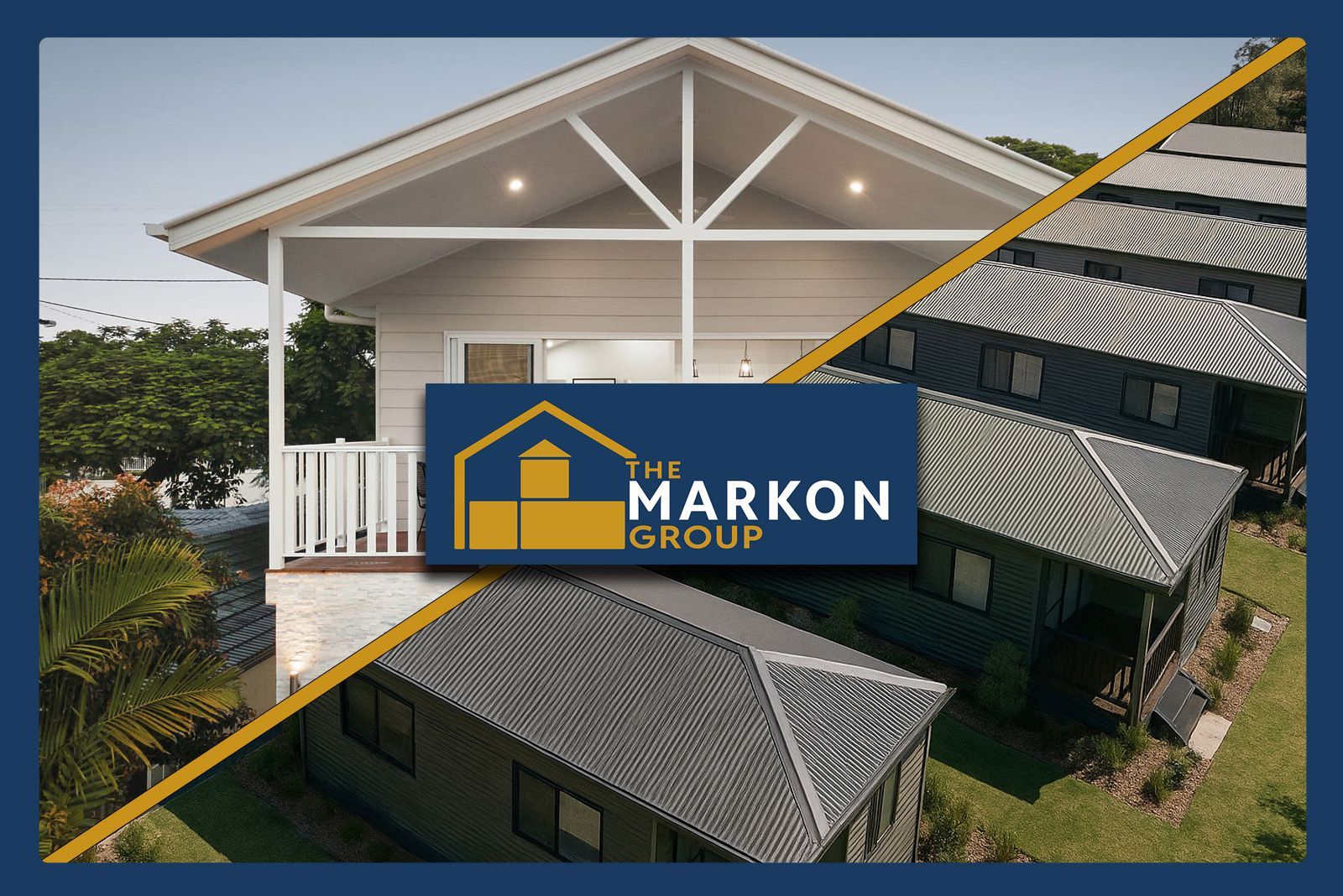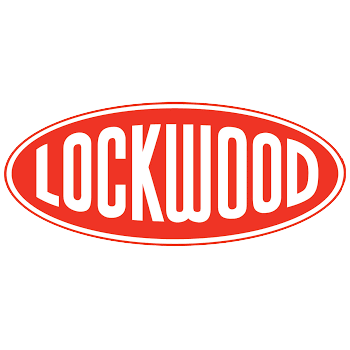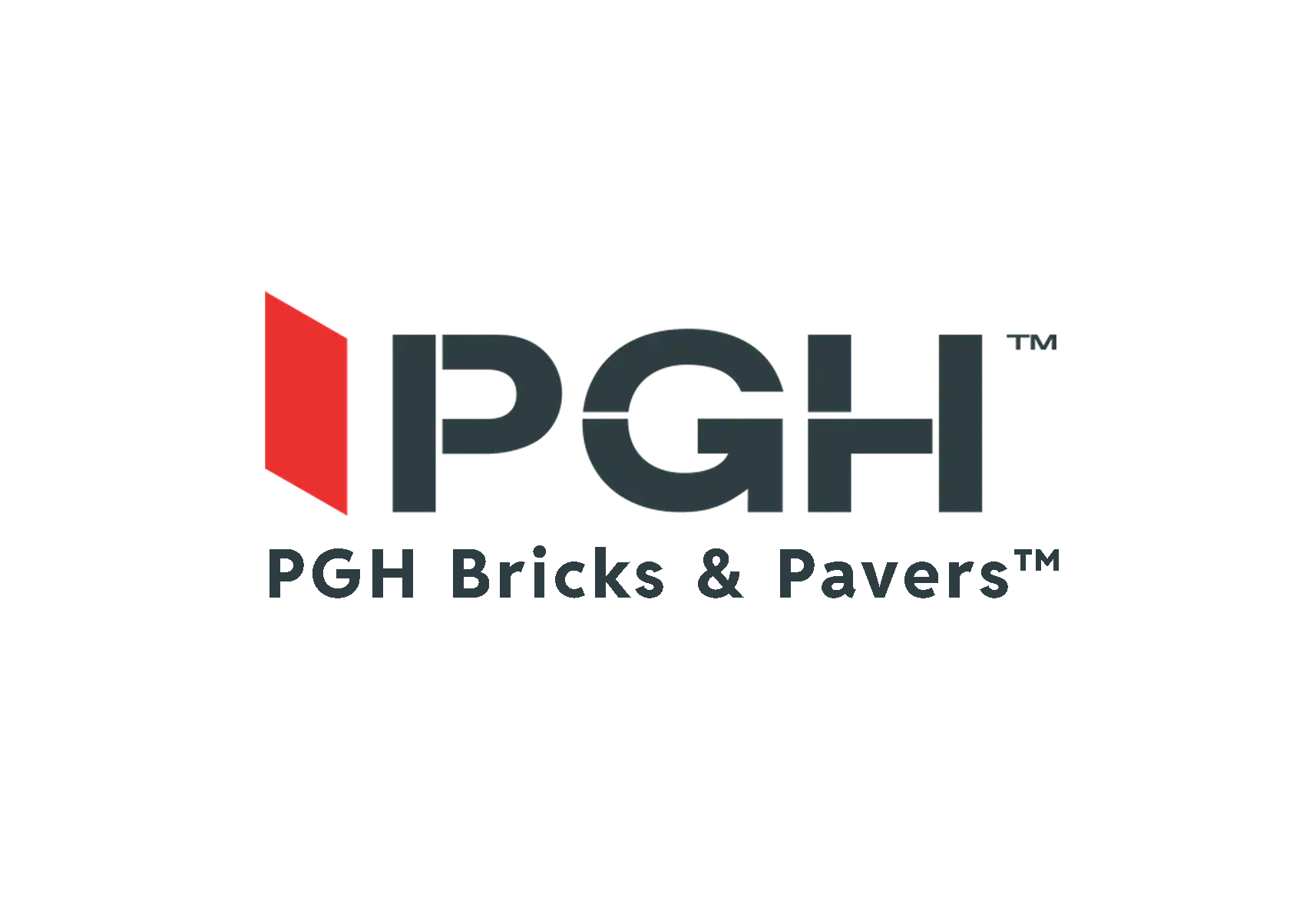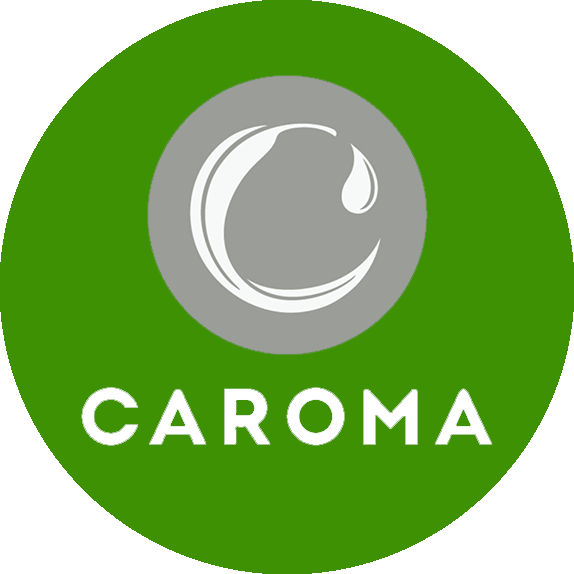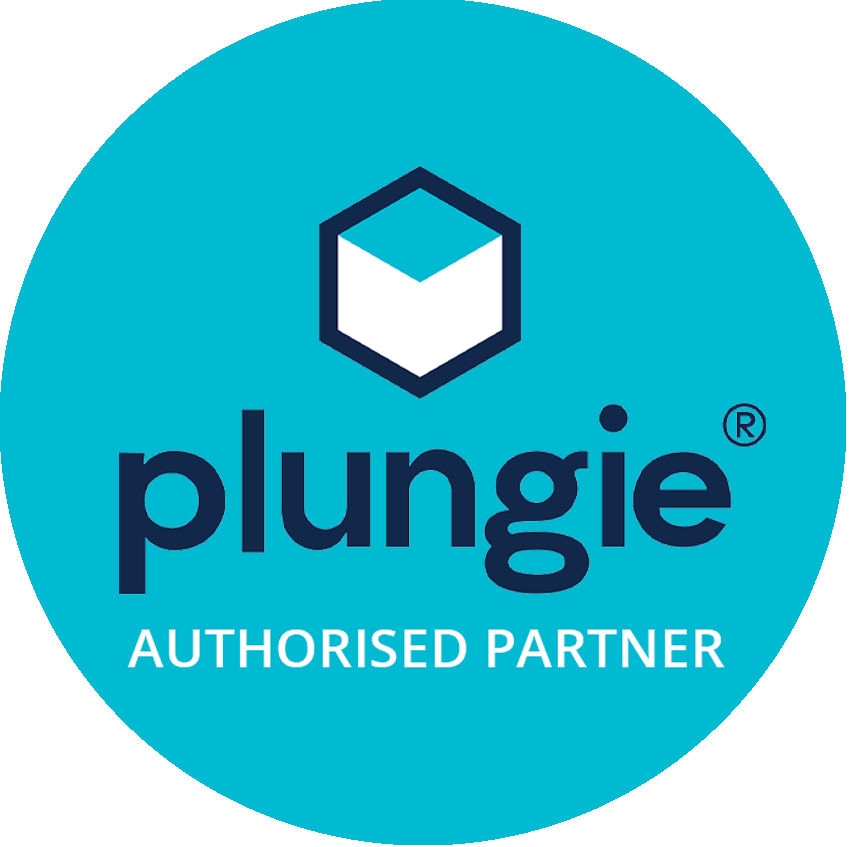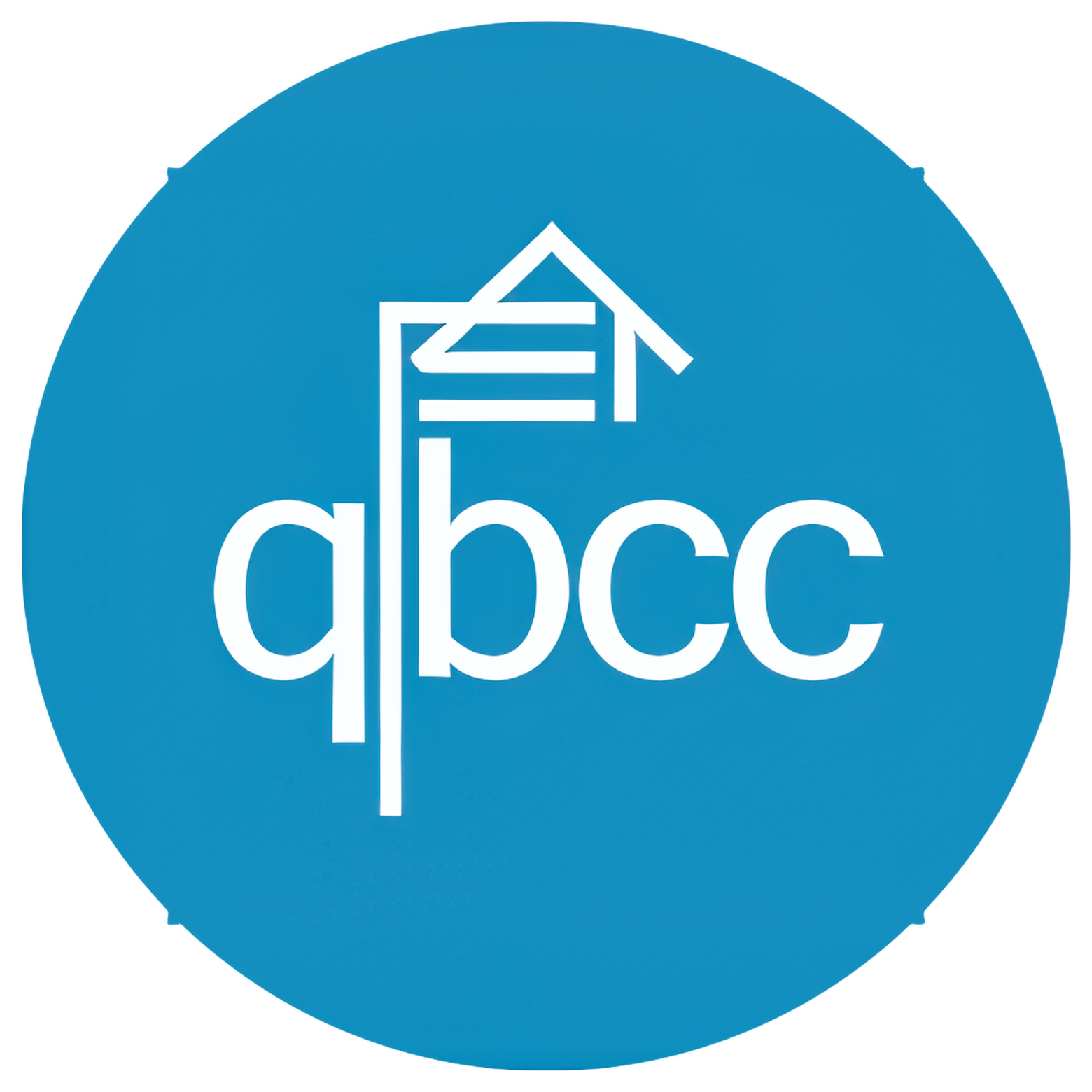The Friendly Aussie Guide to Building Your First (or Forever) Home Theatre in 2025
By The Markon Group — helping Australians design spaces they love coming home to.
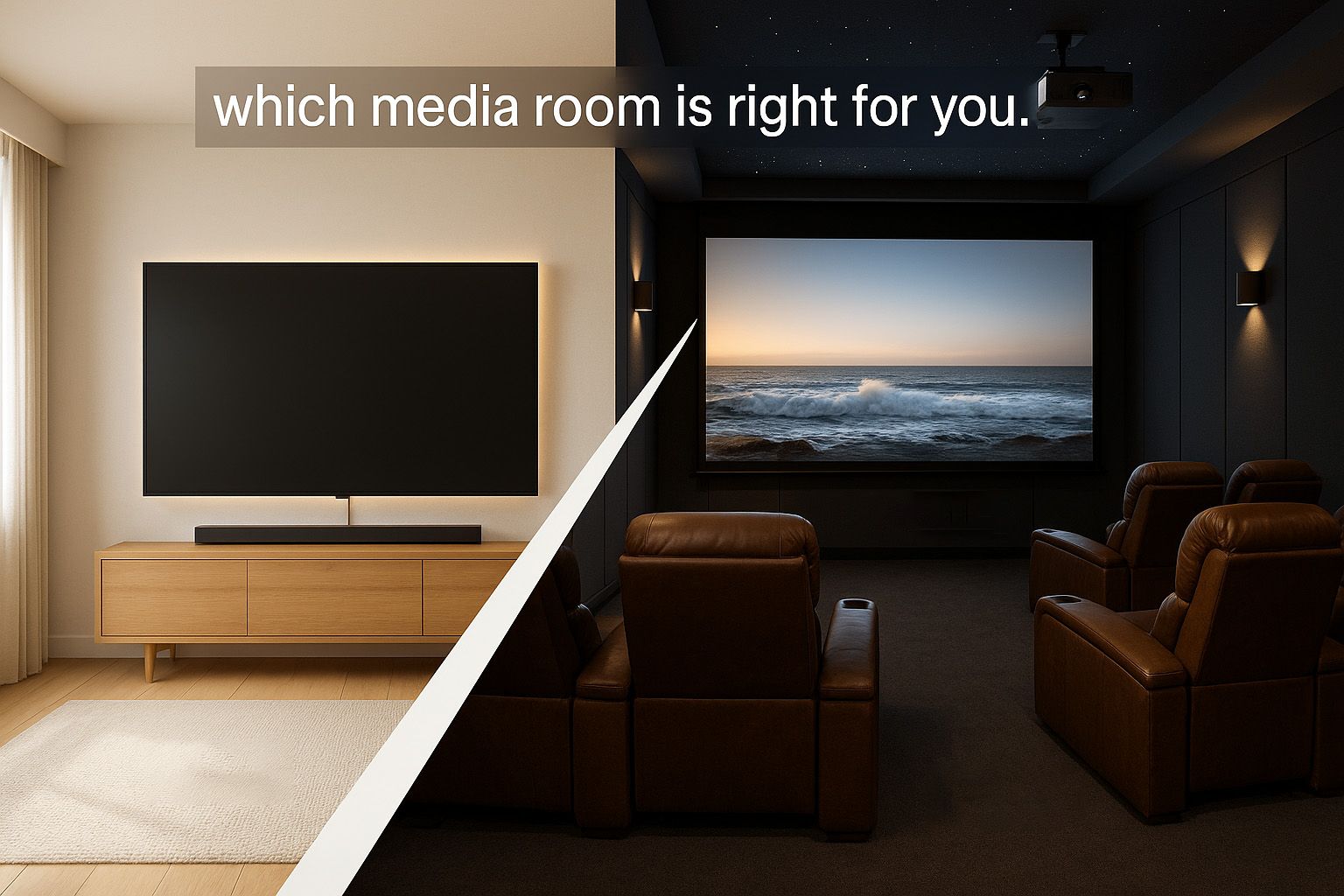
Whether you’re a first-home buyer carving out a cosy movie nook or you’re planning a big rebuild with a dedicated cinema that’ll make your local multiplex jealous, this guide walks you through the choices that matter in 2025 — in plain English, with Aussie-specific tips, ballpark costs in AUD, and a friendly nudge when it’s time to call in the pros.
We’ll cover:
- When a huge 85–100" TV makes more sense than a projector — and when it doesn’t
- Long-throw vs ultra-short-throw (UST) projectors (and what “throw ratio” actually means)
- Soundbars vs 5.1 and 7.1 surround, plus wired vs wireless speakers
- Why hard-wired Ethernet outlets still matter (yep, in 2025!)
- Cinema seating, sightlines, risers and that “wow” feel
- What things cost right now in Australia (approximate ranges)
- A simple step-by-step plan for first homes, upgrades and forever homes — with a friendly CTA on how The Markon Group can help at each stage
All prices below are indicative as of August 2025 and vary by state, metro vs regional, brands and availability.
1) Start here: What kind of space are you building?
A. First-home buyer, small living room
Goal: big upgrade over TV speakers, minimal cabling, renter-friendly where possible.
- Display: 75–85" TV if it fits (many modern units are surprisingly light and thin). 85" models are now way more accessible than a few years ago, with 2025 prices often starting in the mid-$2,000s and climbing with premium features; 98–100" models typically land in the $4,500–$10,000 range depending on brand and panel tech.
- Sound: A soundbar with wireless sub is the simplest power-to-wow boost. In Australia, independent testing shows soundbars span roughly $100 to $4,000, and price is not a guarantee of quality — some under $300 beat pricier models.
- Networking: If you’re building new or doing light renos, add 1–2 Ethernet wall points behind the TV and at a desk. Wired is still the fastest and most stable connection for streaming and gaming, and the NBN recommends planning structured cabling for reliability and security.
B. Growing family or upgrade reno
Goal: brighter picture, better sound, simple controls.
- Display: If your room is moderately bright or multi-use, a 90–100" TV is maintenance-free and super punchy for sport and games. In darker rooms (or for the movie purist), consider a UST projector onto an ALR (ambient light rejecting) screen for a 100–120" cinematic image without ceiling mounts. CHOICE’s projector guide explains that good 4K models start around $2,000, with premium units at $5,000+.
- Sound: A quality 5.1 surround (five speakers + sub) elevates dialogue clarity and immersion; 7.1 adds rear surrounds for larger rooms. Dolby’s setup guides cover ideal angles and ear-height placement to get it right.
- Networking: Plan Ethernet to the TV, streamer, and AVR (or to your mesh nodes if you’re running a hybrid). NBN’s advice: cable key devices and use Wi-Fi for mobility.
C. Big rebuild or forever home (dedicated cinema + whole-home)
Goal: a purpose-built room that looks and sounds phenomenal — and ages gracefully.
- Display: For a true cinema feel (120–150"), a long-throw ceiling-mounted projector with a fixed screen still wins for sheer size; USTs make sense when you want the gear up front and minimal ceiling work. CHOICE explains throw ratios, viewing distances (a 100" screen is typically ideal at ~3–4 m), and why screen quality matters.
- Audio: Step up to 7.1 or Dolby Atmos (e.g., 7.1.2 / 7.1.4) with in-ceiling height speakers for that “overhead” whoosh. Dolby publishes clear placement diagrams so your builder can get pre-wiring spot on.
- Networking: Treat structured cabling like plumbing. Run CAT6/CAT6A to racks, TVs, office, cameras, WAP locations, and the cinema — and keep conduit spare for future fibre. NBN specifically suggests cabling planning during a build and adding data ports in high-use areas. NBN Co
2) Projectors vs Big TVs (85–100") in 2025
When a TV wins:
- You watch a lot of sport or daytime TV in brighter rooms, want HDR pop and zero lamp maintenance, and you’re OK topping out around 98–100". 2025 Australian retailer listings commonly show 98" models from roughly *$4,500 to just under *$10,000 depending on brand (QLED/Mini-LED vs entry lines).
When projection wins:
- You crave screen sizes 120–150" (and beyond). With the lights dimmed and a good screen, a projector feels like a private cinema. CHOICE’s buying guide breaks down long-throw vs UST and shows that quality 4K starts near *$2,000, with premium home-theatre units at *$5,000+.
UST vs Long-throw — quick explainer:
- Long-throw sits several metres back (often ceiling-mounted) and is great if you can run cables and control light.
- UST sits just below the screen, fires up at a steep angle, and avoids ceiling work — but it needs precise placementand a very flat ALR screen to avoid geometry issues. (CHOICE covers pitfalls like sensitivity to slight mis-alignment.)
3) Sound: Soundbar vs 5.1 vs 7.1 (and where wireless fits)
Soundbars
- Ideal for small to mid rooms; 1 cable (HDMI eARC is best), quick setup, minimal boxes. In Australia, tested units range from *$100 to $4,000, but value sweet spots often sit between *$300–$1,200 — and price isn’t everything. If you want true height channels (e.g., Dolby Atmos), look for up-firing drivers and eARC support.
5.1 surround
- Big jump in immersion for movies and games, with rear surrounds and a dedicated sub. Requires an AVR (audio-video receiver), speaker wire runs, and some planning. Dolby’s seat-centric placement guides (angles/ear height) are your best friend here.
7.1 (and Atmos)
- Better envelopment in larger rooms; 7.1 adds rear surrounds, and Atmos adds height channels (e.g., 7.1.2 or 7.1.4). Follow Dolby’s diagrams for positions and pre-wire during construction.
Wired vs wireless speakers
- Wired: rock-solid reliability, zero RF dropouts, and no latency headaches — preferred for dedicated rooms.
- Wireless: faster install, easier expansion, tidy aesthetics. Great in living spaces; ensure a strong network backbone. (Even in wireless ecosystems, you’ll usually have power leads to each speaker, and the sub may still prefer a cable for performance.) For mixed homes, we often wire the bedrock channels (L/C/R/Sub) and consider wireless surrounds as needed. For the internet backbone itself, NBN is clear: wire key devices for stability.
4) Ethernet hard-wired outlets: still worth it (and where to put them)
Even in 2025’s Wi-Fi-everywhere world, hard-wired Ethernet quietly prevents 90% of the streaming frustration we get called out to fix.
- Why: Faster and more stable than Wi-Fi, less interference, and generally more secure. NBN’s guidance recommends planning structural cabling, placing data ports in heavy-use zones (lounge, home office, games room).
- What to run: CAT6 or CAT6A (we prefer CAT6A in long runs and equipment racks).
- Where: Behind the TV/projector stack, by the AVR, at your desk(s), ceiling locations for WAPs, and near any fixed PC/console.
- Cost: For budgeting, Australian installers commonly quote ~*$150–$300 per data point (simple runs) — complex routes and patch panels cost more; labour/hourly models also exist. Get a quote from a registered cabler (ACMA requirement).
Pro tip: If you’re building new, run two cables per outlet location while the walls are open. Cable is cheap; labour later is not.
) Seating & sightlines: how to get that cinema feel
- Viewing angle: THX recommends ~36° from the farthest seat — a neat, simple anchor when sizing your screen to your room. Bigger screen ≠ better if you’re too close; this keeps the image immersive without neck craning.
- Distance: CHOICE suggests a 100" screen pairs well at ~3–4 m; sit closer if it’s a true 4K projector/TV to enjoy the detail.
- Risers: If using two rows, a modest rear riser (often ~200–300 mm, tuned to your sightline and screen height) prevents heads in frame.
- Chairs: Dedicated theatre recliners with head support are bliss for long films; in family rooms, a deep sectional plus a slim front bench/ottoman can create that tiered feel without heavy build-outs.
- Aisles & ambience: Leave 750–900 mm walking space if you can, and add low-level step lights or LED strips on dimmers for that magic “lights down” moment.
6) Room design extras that pay off
- Acoustic treatment: Soft furnishings, rugs, curtains — then add panels if needed. (In a forever room, consider absorption at first-reflection points; leave bass to the sub + placement.)
- Lighting: Dimmable downlights on separate circuits, wall sconces, and blackout blinds for projector rooms.
- Power: More outlets than you think — behind the TV, at the rack, near subs (front & back walls), projector location, and seating for charging.
- Ventilation: Equipment racks and closed cabinetry need airflow.
- Control: A universal remote or simple app-based control avoids the remote pile and keeps the family happy.
- Screen choices (projection): Use a proper screen — CHOICE notes picture quality suffers on bare walls; ALR screens are great for UST in brighter rooms.
7) What things cost in Australia (2025): three realistic bundles
(Indicative, AUD. Gear only unless noted; installation adds cost. We’ll happily tailor a quote.)
A) First-home “Movie Night Upgrade” — ~*$1,200 – *$4,500+
- 85" TV (value-oriented): ~$2,500–$4,000+ depending on brand/panel; 75" options can be lower.
- Soundbar + sub: $300–$1,200 (premium bars up to $4,000 exist, but you don’t need to start there).
- Ethernet points (2 simple runs): ~$300–$600 plus materials/patching if needed; complex runs cost more.
B) Family-room “Big Screen + Surround” — ~*$6,000–*$18,000+
Pick one display path:
- 98" TV: roughly *$4,500–*$10,000 depending on brand and Mini-LED/QLED tier.
OR - UST or long-throw 4K projector + 100–120" screen: ~*$2,000–*$6,500+ for the projector; screens *$500–*$2,000+. (Premium projectors go higher; CHOICE places “premium home theatre” at *$5,000+.)
Then add:
- 5.1 speaker package + AVR: very broad range; entry combos from ~*$1,500–*$3,500, enthusiast tiers *$4,000–*$8,000+. (For a single-figure anchor: many Australian “home theatre” builds fall from under *$500 basic to *$10k+for room-based systems with projection.)
- Ethernet to TV/AVR/mesh: allow *$150–*$300 per point for straightforward runs.
- Basic install & tuning: varies by scope, wall type and access.
C) Dedicated “Forever Cinema” — ~*$25,000–*$150,000+ (choose your adventure)
- Projection path: Long-throw 4K laser + 120–150" fixed screen, acoustically transparent if hiding speakers. CHOICE notes premium projectors are typically *$5,000+; flagship units and studio-grade screens will go higher.
- Audio: 7.1.4 Atmos with in-ceiling heights and dual subs for smoother bass. Follow Dolby’s diagrams and wire during the build
- Seating: 1–2 rows of recliners or mixed lounge layout with a riser.
- Room fit-out: acoustic treatments, blackout, lighting, star ceiling if you fancy it, ventilation and a quiet equipment rack.
- Cabling: structured CAT6A to rack, projector, WAPs, control system; plenty of power.
8) New-home build costs (the broader picture)
For overall new-home build budgeting in Australia (beyond theatre gear), 2025 guides commonly cite per-square-metrecosts around *$1,300–*$3,900/m² for standard builds, with architect-designed homes higher again — ranges that swing with site, finishes and location. Treat these as planning rails; your builder’s fixed-price inclusions and soil/site conditions will drive the final number.
If your theatre is part of a renovation/addition, industry cost guides (e.g., Archicentre’s 2025 PDF) list indicative per-m² shell rates for extensions and remind you to add the “wet area” costs separately if you’re moving kitchens/baths. The exact figure depends heavily on scope, access and services upgrades — best discussed at brief stage.
9) A step-by-step plan (so it all runs smoothly)
First-home buyer (4–8 steps)
- Pick your screen size your wall can truly fit (masking tape outline helps).
- Choose audio: start with a soundbar + sub (HDMI eARC).
- Add Ethernet if you can: one behind TV, one at your desk.
- Tidy power: a recessed GPO, cable raceways.
- Lighting: a floor lamp on a smart dimmer and blackout curtains if you’re serious about movie nights.
- Calibrate basics: turn off over-sharpness on the TV, set the soundbar’s dialogue/enhancement modes.
- Stash a future plan: Maybe you’ll add two wireless surrounds later — make sure there’s power where they’d sit.
- Keep it simple: one remote/app the whole family can use.
Family upgrade (7–10 steps)
- Decide TV vs projector for your light levels and use.
- If projection, pick UST vs long-throw and order the right screen.
- Move to 5.1 surround with speaker positions by the book (Dolby).
- Wire key devices (TV/AVR/mesh node) and keep Wi-Fi for tablets/phones.
- Put your subwoofer on a short test-crawl to find smooth bass.
- Add dimmers and reduce reflective décor opposite the screen.
- Save outlet space for a games console / media box; mind HDMI 2.1 for 4K/120 gaming.
Forever cinema (10–14 steps)
- Lock in room dimensions and layout early; screen wall and seating plan together.
- Choose screen size using THX’s ~36° viewing angle from the back row, then confirm distance against CHOICE’s guidance.
- Decide long-throw vs UST based on ceiling access and furniture preferences.
- Select 7.1.x or 9.1.x Atmos; follow Dolby placement for wiring.
- Run CAT6/6A everywhere you may need it; leave spare conduit.
- Plan power (front, back, ceiling, rack) and ventilation (quiet fans).
- Specify acoustics: carpet, curtains, then panels if needed.
- Choose lighting scenes (pre-show, intermission, credits).
- Build a simple control story (one app/remote).
- Commission and calibrate — speaker levels/Delays, projector focus/keystone (minimal), TV’s Filmmaker Mode/HDR tone-mapping, etc.
10) Friendly FAQs (you’ll probably ask these)
Q: Do I really need a projector screen, or can I use a white wall?
A: A screen’s optical coating makes a visible difference. CHOICE says screens improve sharpness, contrast and colour; walls are OK for casual movie nights only.
Q: Is UST “good enough” compared with a big TV?
A: In a dim space with the right ALR screen and careful setup, UST looks fantastic and gives you 100–120" without ceiling work. In bright family rooms, a 98–100" Mini-LED TV still wins for daytime punch and HDR sparkle.
Q: Atmos on a soundbar or do I need ceiling speakers?
A: Up-firing soundbars can create convincing height in the right rooms, but true Atmos uses ceiling speakers or dedicated height drivers. Dolby’s guides show the difference in layout and performance.
Q: Is Ethernet overkill for a modern home?
A: Not if you stream a lot of 4K sport/movies or game online. NBN explicitly calls wired faster and more stable, and suggests adding extra data ports during a build.
11) What about total home build budgets?
For your overall new-home budget framing, 2025 Australian guides often cite *$1,300–*$3,900 per square metre for standard builds (architect-led projects trend higher). Use this as a planning range only; your fixed-price build quote, soil tests, design complexity and finishes will refine it.
12) How The Markon Group can help
No matter where you are on the journey — first home, family upgrade, or forever cinema — The Markon Group can make this easy and fun:
- Discovery chat: We’ll listen, map your space, and talk honestly about what matters to you and your budget.
- Design & quotes: From “TV + soundbar + two data points” to a full 7.1.4 cinema, we’ll design options with clear costs — including builder-friendly plans and wiring diagrams.
- One-team delivery: We coordinate registered cablers, electricians, joiners and installers so it all just works.
- Calibrate & handover: We tune your system, set up simple controls, and leave you with a cheat sheet the whole family understands.
- Aftercare: Friendly support, upgrades down the track, and advice when tech changes.
Ready to sketch your perfect movie night?
Let’s plan it together. Reach out to The Markon Group for a quick, no-pressure chat and we’ll tailor a path that fits your home, your style and your budget.
Sources & notes
- TV pricing examples (Australia, 98"): live retailer listings in Aug 2025 commonly show ~*$4,500–*$9,888 depending on brand/tier.
- Soundbar costs & setup best practices (Australia): CHOICE buying guide (range from *$100 to *$4,000; eARC/Atmos notes).
- Projectors (long-throw vs UST), screen sizes, throw ratios & pricing tiers: CHOICE projector guide (100" ideal at ~3–4 m; standard 4K ~ *$2,000; premium *$5,000+; UST considerations; screen vs wall).
- Wired vs Wi-Fi at home; plan extra data ports: NBN’s “Wired vs Wireless” guidance (wired = faster/more stable/more secure; plan ports; use registered cablers).
- Viewing angle: THX recommends ~36° from the farthest seat.
- Surround/Atmos placement: Dolby’s setup guides for 5.1/7.1/Atmos (7.1, 7.1.4 examples).
- New-home build per-m² planning rail (2025): hipages 2025 overview (typical *$1,300–*$3,900/m²; architect builds higher).
- Renovation cost notes: Archicentre 2025 Cost Guide (indicative per-m² shell rates for additions; wet area fit-outs separate).
- Data point installation budgeting: example Sydney installer guidance *$150–*$300 per point, complexity varies; always use a registered cabler.
* DISCLAIMER The Markon Group are not affiliated with any retail group mentioned or implied throughout this article. This information is given in good faith and is regarded as "general" in nature. All Prices are regarded as general in nature as of 2025. Should you wish to incorporate any type of home entertainment or theatre build no matter how big or small into your new home be sure to discuss with us and we can map out a detailed cost and budget for you as part of the home build price.
Reach out to our team by contacting us anytime below
